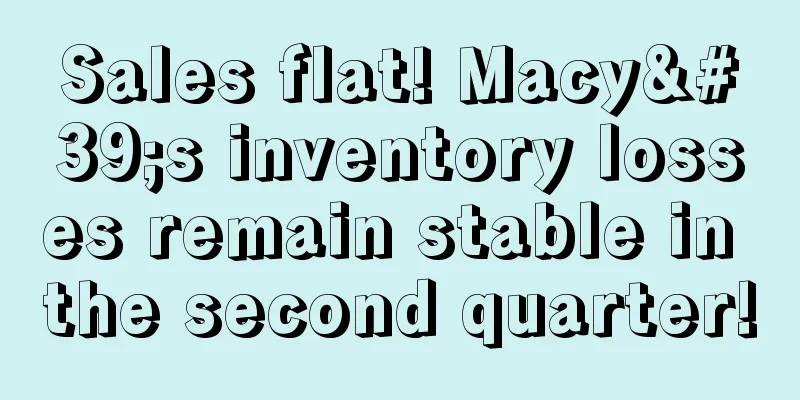Amazon's new fees are coming! Warehousing costs are already skyrocketing

|
In the past two days, sellers have received emails from Amazon, reminding them that Amazon will start to impose a surcharge on warehouse utilization starting in April! As the name suggests, this utilization surcharge is charged to sellers with poor warehouse turnover. According to the official algorithm, warehouse utilization rate = average daily inventory in the past 13 weeks ÷ average daily delivery volume. For example, if the seller's average daily inventory in the past 13 weeks is 1,000 pieces and an average of 20 pieces are sold every day, the utilization rate is 50 days, or about 7 weeks . After the calculation, you can refer to the official table to determine which category you belong to and how much additional fees may be incurred. For sellers with a warehouse utilization rate of less than 26 weeks, Amazon will not charge this surcharge. For sellers with a warehouse utilization rate of more than 26 weeks but less than 39 weeks, Amazon will charge an additional $0.69 per cubic foot on top of the original monthly storage fee. For sellers with a warehouse utilization rate of more than 39 weeks, Amazon will charge an additional $0.94 per cubic foot. As we can see from the above picture, this surcharge is very, very scary. It is almost as expensive as the normal monthly storage fee. If it exceeds 39 weeks, this surcharge is even more expensive than the storage fee! This means that if the seller does not have a good turnover, he may be charged double the storage fee! What is everyone's warehouse utilization rate? Come and vote to see what your warehouse utilization rate is among sellers. If the utilization rate is not ideal, the current work is to focus on whether to optimize the redundant inventory. Now is not the time to wait for a year to collect long-term storage fees. If the new product inventory is unsalable, it will bring double the storage costs before a full year. This is Amazon forcing sellers to quickly abandon poorly performing products and reduce inventory. In addition , the long-term storage fee has been renamed as overage storage capacity surcharge, and the charging stage has also undergone major changes. “ On April 15, an additional fee will be charged for overage storage capacity Previously, long-term storage fees were charged based on inventory stored for more than three quarters. Now it has been changed to an overage storage capacity surcharge, which will be charged from 180 days, or six months after storage . Moreover, as long as it exceeds these six months, the overage storage fee will gradually increase every month thereafter. This fee replaces the original long-term storage fee and will take effect from April 15. The utilization surcharge and the overage surcharge are for one purpose: to encourage sellers to work harder on FBA warehouse turnover, to decisively "let go" of redundant and unsalable inventory, and to be more cautious when preparing for the peak season. |
<<: Sales increased by 270% year-on-year! ? TikTok Shop released a new strategy
Recommend
What is Etsy Wholesale? Etsy Wholesale Review
Etsy Wholesale is a marketplace launched by Etsy t...
Amazon Promotions-How to Set Up a One-Time Coupon Code
<span data-shimo-docs="[[20,"通过Money Off方式...
A must-have for selecting products in the second half of the year! Official submissions for Amazon Europe’s first big promotion in the second half of the year have started
Following Prime Day, Amazon Europe will usher in ...
What is OrderPlus? OrderPlus Review
OrderPlus is a cross-border e-commerce company tha...
I accidentally went undercover in several training companies and uncovered the fact that not everyone in cross-border e-commerce is a millionaire!
Chenny My C position After more than half a year, ...
What is Mengdian Global Shopping? Mengdian Global Shopping Review
Mengdian was founded in March 2015. It is a well -...
What is Dealsea? Dealsea Review
Dealsea is one of the top ten discount websites in...
How to build and evaluate private domain traffic
Table of contents: 1. How can a new product listi...
Amazon sellers share their experience in clearing inventory
Clearance experience According to the priority, i...
What is CBP? CBP Review
CBP (U.S. Customs and Border Protection) is a fede...
What is OE Demo Account? OE Demo Account Review
In simple terms, an OE demo account gives you a ch...
Generation Z drives rapid growth of social e-commerce
Recently, according to foreign media reports, the ...
What is RFC (Mexican Tax Registration Number)? RFC (Mexican Tax Registration Number) Review
RFC (RegisTRO federal de Contribuyentes/Mexican Ta...
US holiday sales may be sluggish! Walmart cuts peak season hiring!
<span data-docs-delta="[[20,"获悉,据外媒路透社报道,在...









